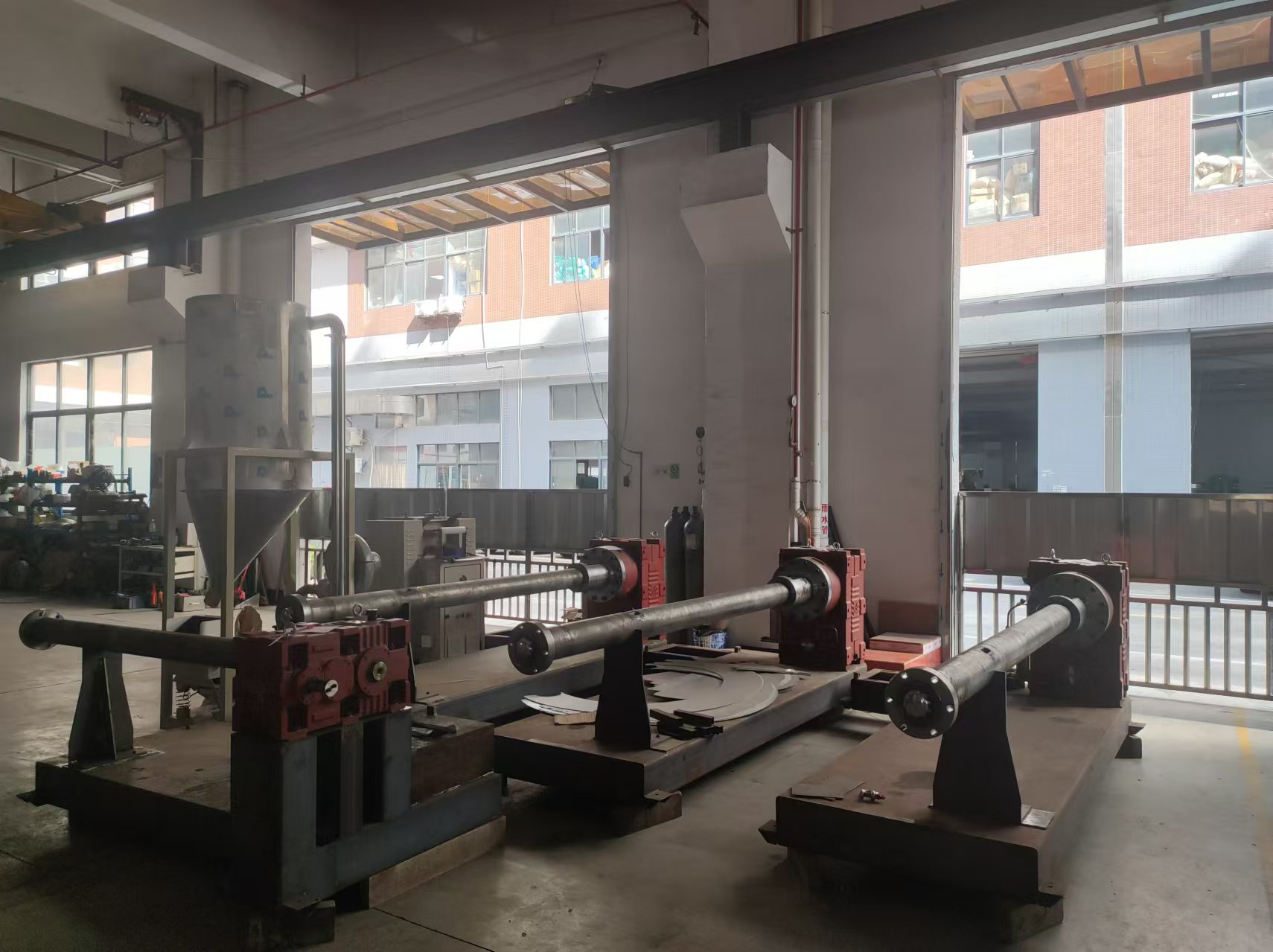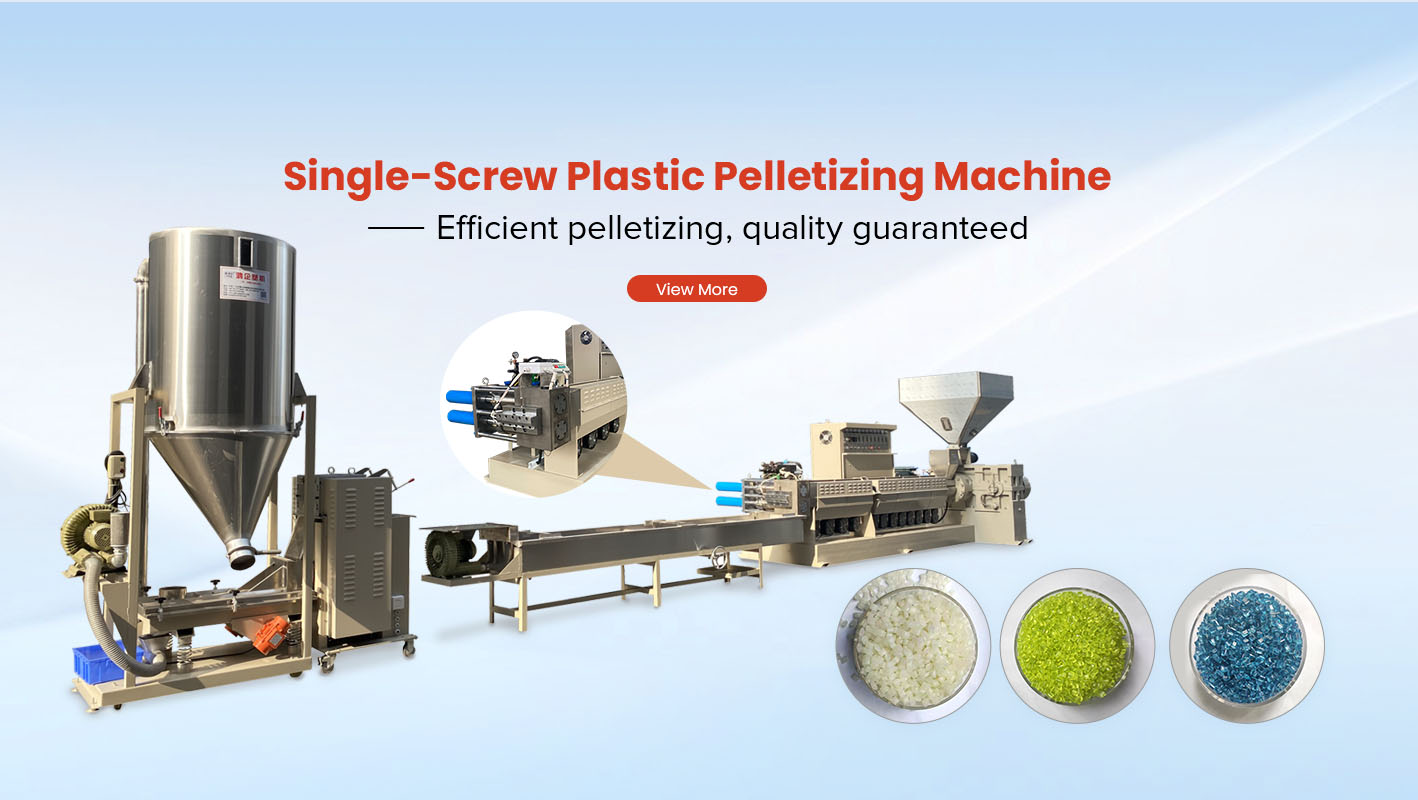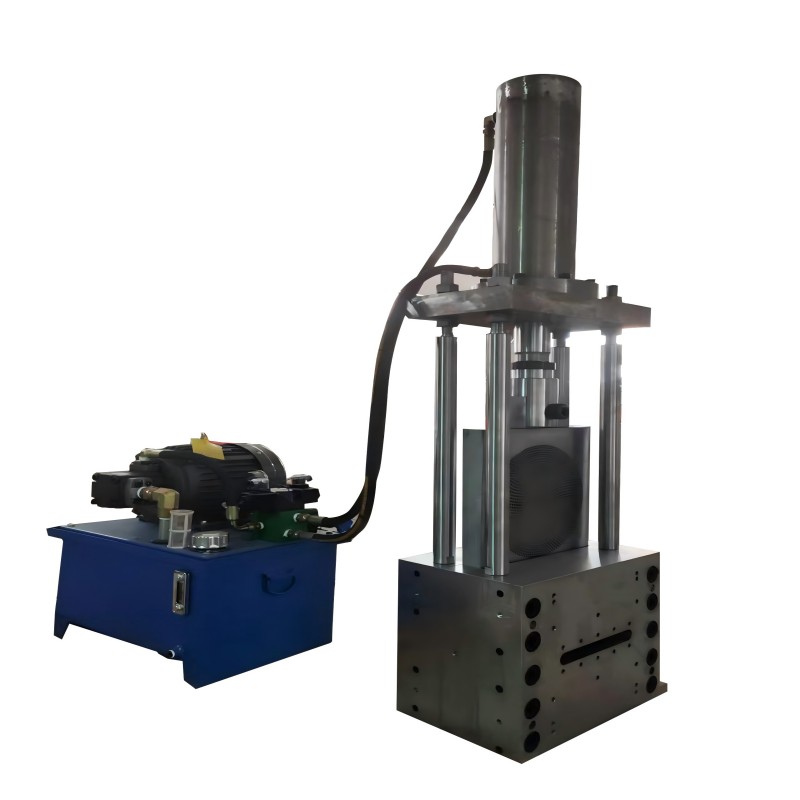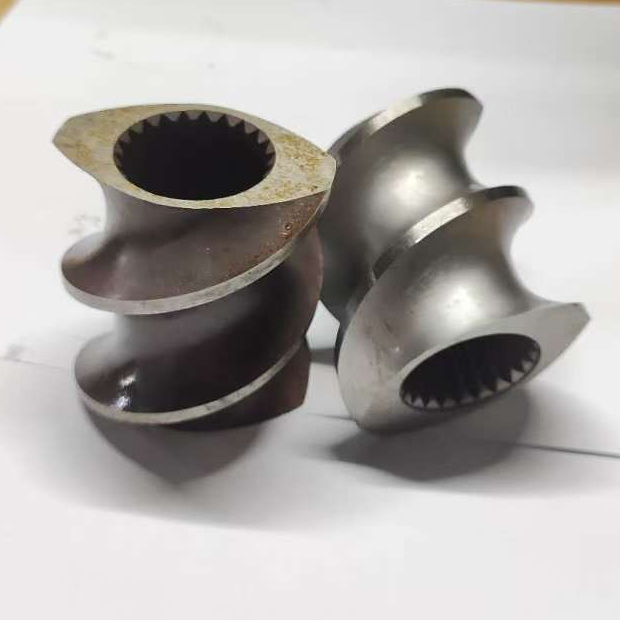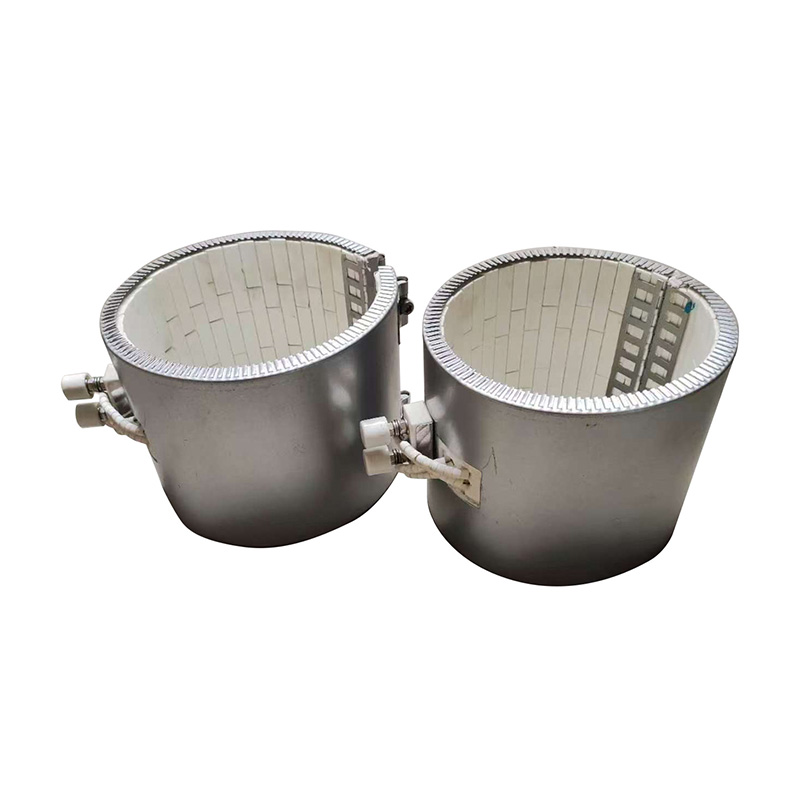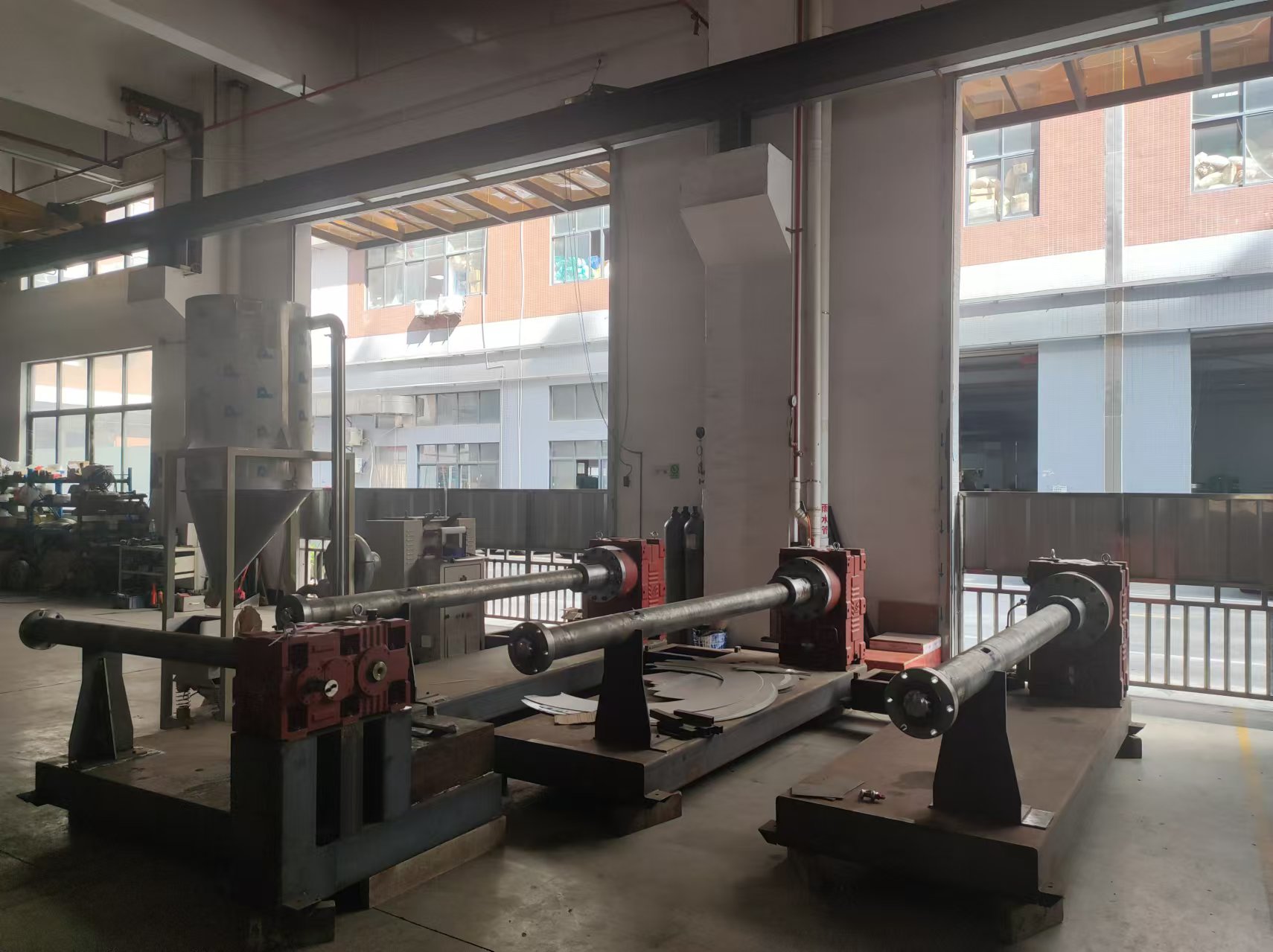Single Screw Extruder Screw And Barrel
- Product Information
Single Screw Extruder Screw And Barrel is the core component of the single screw extruder. The screw is usually a cylindrical metal rod with a spiral groove installed inside the barrel. The barrel is a hollow cylindrical metal part that surrounds the screw, forming a narrow gap between the two. During the extrusion process, plastic particles enter from one end of the barrel, and the shear force and friction generated by the rotation of the screw melt the plastic and push it forward, and finally extruded from the other end of the barrel.

Single Screw Extruder Screw And Barrel Features:
High-precision manufacturing: Single Screw Extruder Screw And Barrel has extremely high manufacturing precision. The screw groove depth tolerance is controlled within ±0.05mm, and the cylindrical error of the barrel inner diameter is less than 0.03mm, which ensures the precise fit between the two and reduces the leakage and retention of materials during processing.
Wear-resistant materials: The screw and barrel are usually made of high-hardness alloy steel, and the surface hardness can reach HRC45-55. After special heat treatment processes such as carburizing or nitriding, a hardened layer with a thickness of 0.8-1.2mm is formed on the surface, which significantly improves the wear resistance and corrosion resistance.
Optimized screw design: The length-to-diameter ratio (L/D) of the screw is usually between 20-30, and the compression ratio is between 2-4. These parameters are precisely designed according to different processing materials and process requirements to ensure uniform mixing and plasticization of the plastic melt.
Efficient cooling system: The outer wall of the barrel is equipped with multiple cooling water channels. The cooling water flow rate can be accurately controlled at 10-30L/min, and the cooling water temperature difference is controlled within ±2℃, which effectively controls the working temperature of the barrel and screw to prevent overheating and decomposition of the plastic.
Good surface finish: The inner wall of the barrel and the screw surface are precisely polished, and the surface roughness Ra value is less than 0.8μm, which reduces the friction resistance between the plastic melt and the metal surface, reduces energy consumption, and prevents the material from adhering to the surface of the equipment.
Customizable screw elements: The screw can be equipped with elements with different functions according to different processing requirements, such as mixing section, barrier section and exhaust section, etc. The size and position of these elements can be precisely adjusted to adapt to various complex processing processes.
Application of Single Screw Extruder Screw And Barrel:
Plastic Extrusion: Suitable for the extrusion of various plastics such as PE, PP, PVC, ABS, etc., ensuring efficient material processing and high-quality finished product output.
Plastic Recycling: In the recycling process, the use of high-performance screws and barrel liners significantly improves production efficiency and the quality of recycled materials.
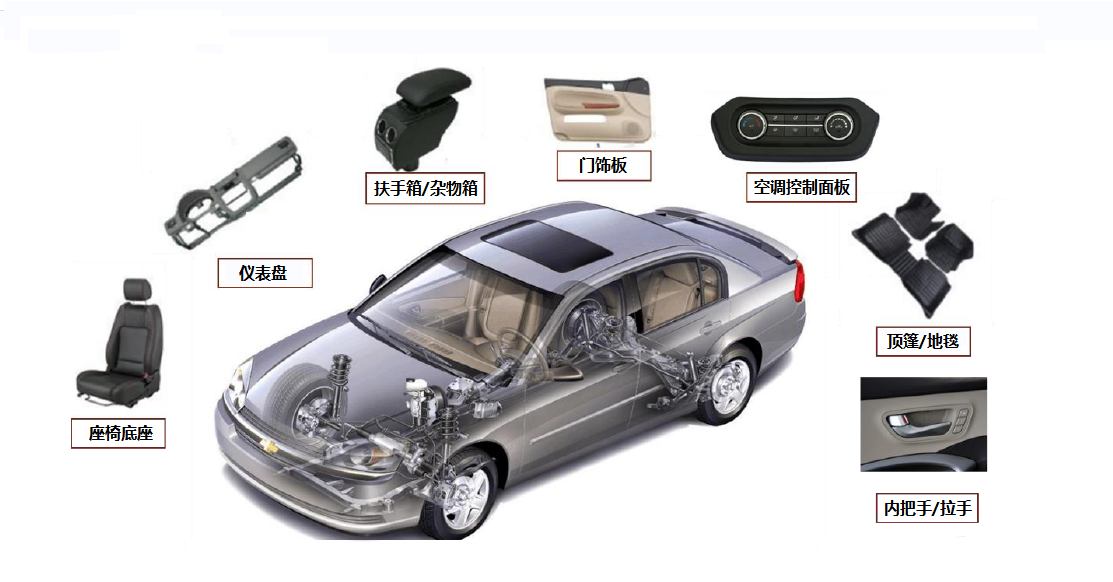
Single Screw Extruder Screw And Barrel Specifications:
Material:
SCM-4 High-Frequency Quenching/Hard Chrome, SACM-1/Nitriding Treatment, or SCM-4 Bimetal.
Applicable Models:
Compatible with various models of single screw extruders.
Customized Service:
Customized screws and barrel liners can be provided according to customer needs to adapt to specific production processes and material requirements.
Service Life:
When the screw processes more than 10,000 tons, or when output significantly decreases, it is recommended to replace the extruder screw. Typically, the screw and the barrel liner are replaced simultaneously.
Our screws and barrel liners for single screw extruders are designed to enhance the efficiency of the extrusion process, making them ideal for improving product quality and production efficiency. For more information or customized solutions, please contact us.
Single Screw Extruder Screw And Barrel Maintenance:
Regular cleaning: After each use, the screw and barrel should be thoroughly cleaned immediately with special cleaning tools and solvents. When cleaning, the equipment needs to be heated to 150-200℃ to reduce the adhesion of plastic residues, and then use non-metallic brushes and copper shovels to remove the residual materials inside to ensure that there is no plastic residue on the surface of the screw and barrel after cleaning to prevent corrosion and damage caused by long-term accumulation.
Lubrication management: Regularly check the lubrication of the bearings and gearboxes at both ends of the screw. The viscosity of the lubricating oil should be controlled between ISO VG 150-220, and the oil level should be kept at 2/3 of the window. The lubricating oil needs to be replaced every 500 hours of operation, and a high-precision oil filter should be used to filter the new lubricating oil to ensure the cleanliness and efficiency of the lubrication system and reduce the wear of mechanical parts.
Temperature control: During startup and shutdown, the temperature of the barrel and screw should be adjusted slowly. The heating rate should be controlled at 3-5℃/min, and the cooling rate should be controlled at 2-4℃/min to avoid thermal stress concentration on metal parts due to sudden temperature changes. For example, when shutting down, the temperature should be lowered to below 100°C before the heating system is turned off to prevent cracks inside the barrel.
Regularly check wear: Use a high-precision inner diameter gauge and outer diameter micrometer to measure the wear of the barrel inner diameter and screw outer diameter every week. When the wear of the barrel inner diameter exceeds 0.3mm or the wear of the screw outer diameter exceeds 0.2mm, it should be repaired or replaced in time. At the same time, check the spiral groove depth of the screw. If the wear exceeds 0.1mm, it also needs to be processed to ensure the matching accuracy of the screw and barrel.
Storage conditions: When the equipment is not used for a long time, the screw and barrel should be disassembled and cleaned, then coated with anti-rust oil and stored in a dry and ventilated environment. When storing, the screw should be placed horizontally on a dedicated support frame to avoid bending and deformation due to gravity. The barrel should be placed vertically and filled with dry nitrogen to prevent moisture and oxygen in the air from corroding the metal surface.
Calibrate sensors regularly: Use standard thermometers and pressure gauges to calibrate the temperature sensors and pressure sensors on the barrel and screw every month. The calibration error of the temperature sensor should be controlled within ±1°C, and the calibration error of the pressure sensor should be controlled within ±0.02MPa. During the calibration process, professional calibration equipment and standard samples should be used to ensure the measurement accuracy of the sensor, thereby ensuring the stability of the extrusion process and the consistency of product quality.
